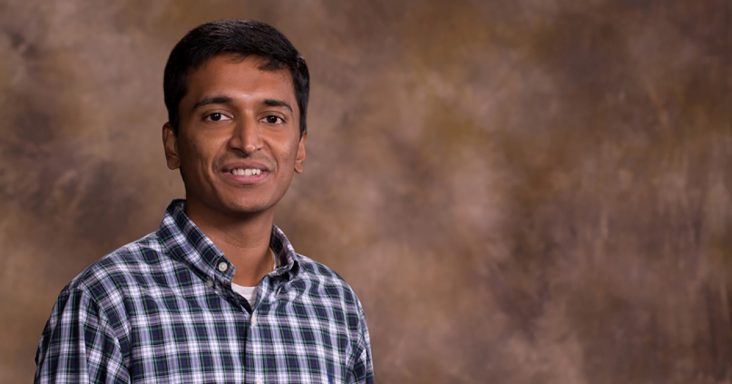UA researchers find way to identify radiation-resistant cancer cells
by July 3, 2018 12:40 pm 453 views

Narasimhan Rajaram, assistant professor of biomedical engineering at the University of Arkansas.
Researchers at the University of Arkansas have found a way to identify radiation-resistant cancer cells, and until now, there’s not been a way to determine immediately after starting radiation therapy whether a tumor is resistant to the therapy, according to a news release.
The findings will help healthcare professionals evaluate and determine the appropriate therapies for lung cancer patients by identifying radiation-resistant cells through imaging. The findings were published this month in “Scientific Reports,” a “Nature” journal.
“Our results demonstrate that the use of auto fluorescence imaging of cell metabolism can identify treatment-resistant cancer cells,” said Narasimhan Rajaram, assistant professor of biomedical engineering at the UA and lead researcher on the project. “More importantly, we think that this technique provides a sound method to evaluate tumor response to treatment and match tumors to the right therapy.”
Researchers from the UA and the University of Arkansas for Medical Sciences (UAMS) used an imaging system to identify differences between the metabolic response of radiation-resistant and radiation-sensitive lung cancer cells after therapy. The researchers used auto fluorescence imaging to see changes in two molecules — nicotinamide adenine dinucleotide (NADH) and flavin adenine dinucleotide (FAD) — both of which absorb and emit light. These molecules are key parts of metabolic pathways in cells and responsible for respiration and energy production. Researchers can study biochemical details related to cell metabolism by measuring how NADH and FAD contribute to respiration and energy production.
Researchers used the auto fluorescence imaging to see changes in cell metabolism after the cells were exposed to radiation and chemotherapy drug YC-1. The drug has been used to improve the effectiveness of radiotherapy on radiation-resistant cancer cells by inhibiting the hypoxia-inducible factor, which regulates the amount of oxygen in cells and protects cancer cells from radiation. In previous research, the researchers found that radiation-resistant cells have higher levels of hypoxia-inducible factor.
The researchers found metabolic differences between radiation-resistant and radiation-responsive cells after they were exposed to radiation only and YC-1 only. But, the differences were eliminated between resistant and responsive cells when the researchers combined radiation and chemotherapy. The results suggest that YC-1 made radiation-resistant cells more sensitive to radiation treatment, and researchers saw this using the auto fluorescence imaging.
Along with Rajaram, the research team includes Kyle Quinn, assistant professor of biomedical engineering; Kinan Alhallak, graduate student in biomedical engineering; Nicholas Greene, assistant professor of exercise science; David Lee, doctoral student in kinesiology; and Ruud Dings and Robert Griffin, faculty in the department of radiation oncology at UAMS. The research is being paid for by the Arkansas Biosciences Institute, the National Institutes of Health and the National Institute of General Medical Sciences.
